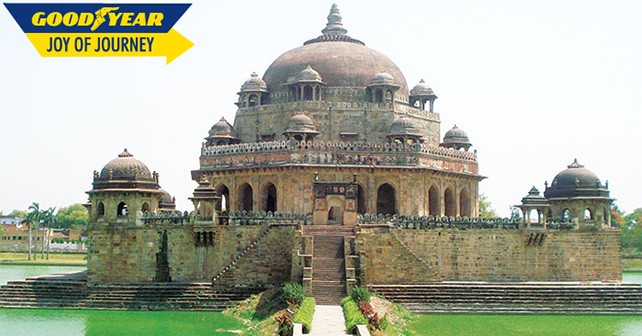
We recently got an opportunity to drive through the lands that gave birth to the rich Indian culture and laid the very basis of Indian education and values. It involved travelling through the heart of the erstwhile Magadh Kingdom, the present state of Bihar.
We started the journey from the holy city of Prayag or Allahabad. We enjoyed the traditional breakfast of Jalebi with Dahi from a dona made of leafs. Just before NH-2 there are many tolls – one at a market (Tehbazari tax of Rs. 50) and the bridge over the Ganga
(Rs. 10). But once on the NH-2 the drive became more enjoyable. The Allahabad bypass is also incidentally the longest bypass section in the country. Soon we were crossing the towns of Varanasi and Mughalsarai.
The road enters Bihar over the river Karamansa on the banks of which Sher Shah Suri had defeated the Mughal emperor Humayun in the battle of Chausa in 1539. Then comes the town of Mohania from where NH-30 takes you to the state capital Patna. The next historical pit stop is the town of Sasaram, which has the tomb of emperor Sher Shah Suri, the builder of the Grand Trunk Road. We visited the tomb, which has the grave of his general at the very entrance, while the graves of the family are located in the inner sanctum under a great dome. The day was very hot and the land was scorched but time stood still for all of us.
Continuing the journey we crossed the mighty Son river (also known as the sorrow of Bihar) and soon we reached the turn off point at Dobhi, where we took NH-83 and moved towards Bodh Gaya, the place where the Prince Siddhartha became Buddha the enlightened one. The Mahabodhi temple and the Mahabodhi tree today are enclosed in a temple compound richly adorned with many praying sites with small stupas and shrines depicting various stages of the life of the Buddha. Bodh Gaya also has many temples made in the architectural style of Japan and other South East Asian countries.
Our next leg of the journey took us to Rajgir where we stayed at a comfortable resort belonging to the Centaur Group of Hotels named the Indo Hokke. The rooms were comfortable and the service quick and respectful. Rajgir was the capital of the King Jarasangh during the Mahabharata era, and subsequently the land of enlightenment of Lord Mahaveera, a contemporary of Gautam Buddha. Rajgir is dotted with old ruins of various eras including the Bimbsar Jail and Jarasangh’s Akhara. New modern era places of interest are Virayatan (an ashram dedicated to social work and showing various scenes of Lord Mahaveer’s life) and a Shanti Stupa atop a hill. For the religious minded there are the hot sulphur springs, which are named after the 7 sages of Hindu mythology and are said to have curative powers.
About 20 kms from the town of Rajgir lies Nalanda, the oldest university in the world. The university was said to cover about 7 square miles of area out of which only about 1 square mile has been excavated. The mighty ruins are impressive and speak of the bygone era when our country was the center of excellence and students from various countries came to this land in search of knowledge and culture.
Travelling through these places is like a journey through time and age that instills in you a great pride of having been born in India.
Leena Chaudhary
Panchkula

















Write your Comment